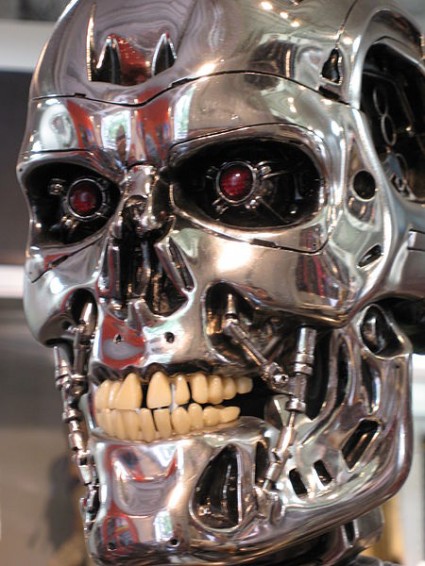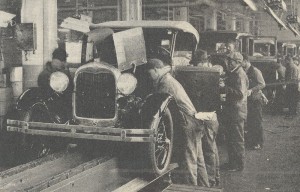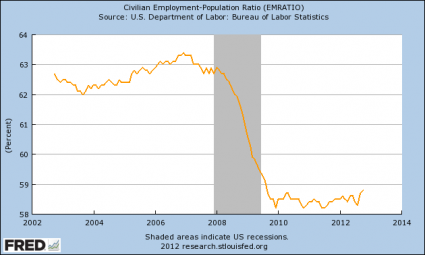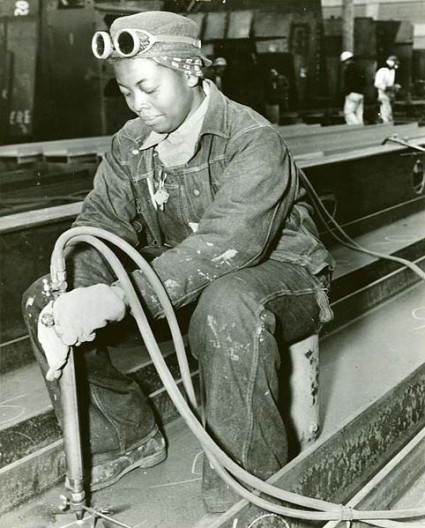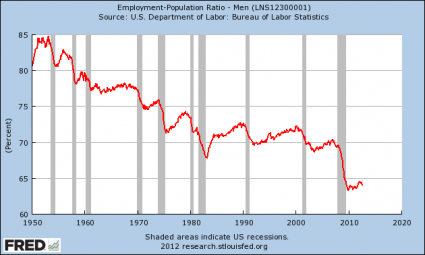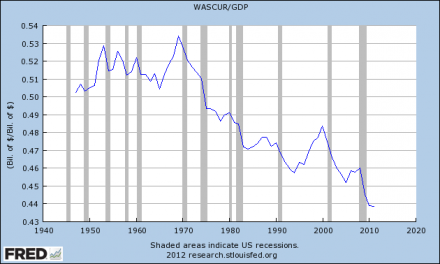 Will a robot take your job? We have entered a period in human history when technology is advancing at an exponential rate. In some ways, this has been a great blessing for humanity. For example, I am absolutely blown away by all of the things that my little iPod can do. But on the other hand, all of this technology is eliminating millions upon millions of high paying jobs. In the past, I have written extensively about how millions of American jobs have been sent to the other side of the world, but now we may be moving into a time when workers all over the planet will be steadily losing jobs to super-efficient robots. For employers, robots provide a lot of advantages to human workers. Robots never complain, they never get tired, they never need vacation, they never show up late, they never waste time of Facebook, they don’t need any health benefits and there are a whole lot of rules, regulations and taxes that you must deal with when you hire a human worker. In the past, robots were exceedingly expensive, and that limited their usefulness in the workplace, but as you will see later in this article that is rapidly changing. As robots continue to become even more advanced and even less expensive, will there eventually come a point where the “human worker” is virtually obsolete?
Will a robot take your job? We have entered a period in human history when technology is advancing at an exponential rate. In some ways, this has been a great blessing for humanity. For example, I am absolutely blown away by all of the things that my little iPod can do. But on the other hand, all of this technology is eliminating millions upon millions of high paying jobs. In the past, I have written extensively about how millions of American jobs have been sent to the other side of the world, but now we may be moving into a time when workers all over the planet will be steadily losing jobs to super-efficient robots. For employers, robots provide a lot of advantages to human workers. Robots never complain, they never get tired, they never need vacation, they never show up late, they never waste time of Facebook, they don’t need any health benefits and there are a whole lot of rules, regulations and taxes that you must deal with when you hire a human worker. In the past, robots were exceedingly expensive, and that limited their usefulness in the workplace, but as you will see later in this article that is rapidly changing. As robots continue to become even more advanced and even less expensive, will there eventually come a point where the “human worker” is virtually obsolete?
Of course I can hear the objections already. Many of you will insist that even though automation has always eliminated jobs in the past, it has also always created new jobs that were even better. For instance, once upon a time most of the U.S. population worked on farms, but thanks to automation now hardly any of us do.
But what happens when we get to the point where super-intelligent robots are more efficient at everything?
What will be left for “human workers” to do?
And if human workers are no longer needed for most tasks, what will their role in society be?
Personally, I still complain about self-service check-in kiosks at airports and self-checkout lanes at supermarkets, but most people seem to have accepted them. There are even many bank branches now that don’t have any humans in them at all. The number of jobs where a human worker is absolutely “required” is dwindling all the time.
And a lot of the jobs that are disappearing thanks to advances in technology are fairly high paying jobs. In fact, one recent study of employment data from 20 countries discovered that “almost all the jobs disappearing are in industries that pay middle-class wages, ranging from $38,000 to $68,000.”
As I mentioned earlier, in the past robots were simply far too expensive to perform most tasks. So human workers had an advantage.
But that advantage is disappearing right in front of our eyes. For example, one company has produced a new robot called “Baxter” that only costs $22,000. The following is from an article about Baxter in the MIT Technology Review…
Baxter was conceived by Rodney Brooks, the Australian roboticist and artificial-intelligence expert who left MIT to build a $22,000 humanoid robot that can easily be programmed to do simple jobs that have never been automated before.
Eventually, the goal is to produce versions of Baxter that will perform tasks even more cheaply than Chinese workers do…
Brooks’s company, Rethink Robotics, says the robot will spark a “renaissance” in American manufacturing by helping small companies compete against low-wage offshore labor. Baxter will do that by accelerating a trend of factory efficiency that’s eliminated more jobs in the U.S. than overseas competition has. Of the approximately 5.8 million manufacturing jobs the U.S. lost between 2000 and 2010, according to McKinsey Global Institute, two-thirds were lost because of higher productivity and only 20 percent moved to places like China, Mexico, or Thailand.
The ultimate goal is for robots like Baxter to take over more complex tasks, such as fitting together parts on an electronics assembly line. “A couple more ticks of Moore’s Law and you’ve got automation that works more cheaply than Chinese labor does,” Andrew McAfee, an MIT researcher, predicted last year at a conference in Tucson, Arizona, where Baxter was discussed.
So it won’t just be American workers that will be displaced by robots – it will literally be workers all over the planet.
In the future, when you call someone for customer service you probably won’t be talking to someone in India. Instead, you will probably be talking to a robot. In fact, this transition is already starting to happen…
IPsoft is a young company started by Chetan Dube, a former mathematics professor at New York University. He reckons that artificial intelligence can take over most of the routine information-technology and business-process tasks currently performed by workers in offshore locations. “The last decade was about replacing labour with cheaper labour,” says Mr Dube. “The coming decade will be about replacing cheaper labour with autonomics.”
IPsoft’s Eliza, a “virtual service-desk employee” that learns on the job and can reply to e-mail, answer phone calls and hold conversations, is being tested by several multinationals. At one American media giant she is answering 62,000 calls a month from the firm’s information-technology staff. She is able to solve two out of three of the problems without human help. At IPsoft’s media-industry customer Eliza has replaced India’s Tata Consulting Services.
Even some of the largest companies in China are starting to make the transition from human workers to robots. The following is from a recent TechCrunch article…
Foxconn has been planning to buy 1 million robots to replace human workers and it looks like that change, albeit gradual, is about to start.
The company is allegedly paying $25,000 per robot – about three times a worker’s average salary – and they will replace humans in assembly tasks. The plans have been in place for a while – I spoke to Foxconn reps about this a year ago – and it makes perfect sense. Humans are messy, they want more money, and having a half-a-million of them in one factory is a recipe for unrest. But what happens after the halls are clear of careful young men and women and instead full of whirring robots?
So what will the world look like as robots begin to replace humans in just about every industry that you can imagine?
A recent Wired article described what this transition might look like…
First, machines will consolidate their gains in already-automated industries. After robots finish replacing assembly line workers, they will replace the workers in warehouses. Speedy bots able to lift 150 pounds all day long will retrieve boxes, sort them, and load them onto trucks. Fruit and vegetable picking will continue to be robotized until no humans pick outside of specialty farms. Pharmacies will feature a single pill-dispensing robot in the back while the pharmacists focus on patient consulting. Next, the more dexterous chores of cleaning in offices and schools will be taken over by late-night robots, starting with easy-to-do floors and windows and eventually getting to toilets. The highway legs of long-haul trucking routes will be driven by robots embedded in truck cabs.
All the while, robots will continue their migration into white-collar work. We already have artificial intelligence in many of our machines; we just don’t call it that. Witness one piece of software by Narrative Science (profiled in issue 20.05) that can write newspaper stories about sports games directly from the games’ stats or generate a synopsis of a company’s stock performance each day from bits of text around the web. Any job dealing with reams of paperwork will be taken over by bots, including much of medicine. Even those areas of medicine not defined by paperwork, such as surgery, are becoming increasingly robotic. The rote tasks of any information-intensive job can be automated. It doesn’t matter if you are a doctor, lawyer, architect, reporter, or even programmer: The robot takeover will be epic.
I don’t know about you, but the phrase “robot takeover” is not exactly comforting.
Perhaps I just watch too many movies.
In any event, as technology advances there will eventually be very few jobs that robots cannot perform. In fact, you might be surprised to learn some of the things that robots are already doing. The following is from a recent Yahoo News article…
Google and Toyota are rolling out cars that can drive themselves. The Pentagon deploys robots to find roadside explosives in Afghanistan and wages war from the air with drone aircraft. North Carolina State University this month introduced a high-tech library where robots — “bookBots” — retrieve books when students request them, instead of humans. The library’s 1.5 million books are no longer displayed on shelves; they’re kept in 18,000 metal bins that require one-ninth the space.
So what will the 3.1 million Americans that drive trucks do for a living once robots are driving all of our trucks?
What will the 573,000 Americans that drive buses do for a living once robots are driving all of our buses?
And eventually even our skies may be filled with robotic drones that are busy performing one task or another. Just check out what a recent Time Magazine article had to say about the emerging drone industry…
But the drone industry is ramping up for a big landgrab the moment the regulatory environment starts to relax. At last year’s Association for Unmanned Vehicle Systems International (AUVSI) trade show in Las Vegas, more than 500 companies pitched drones for filming crowds and tornados and surveying agricultural fields, power lines, coalfields, construction sites, gas spills and archaeological digs. A Palo Alto, Calif., start-up called Matternet wants to establish a network of drones that will transport small, urgent packages, like those for medicine.
In other countries civilian drone populations are already booming. Aerial video is a major application. A U.K. company called Skypower makes the eight-rotored Cinipro drone, which can carry a cinema-quality movie camera. In Costa Rica they’re used to study volcanoes. In Japan drones dust crops and track schools of tuna; emergency workers used one to survey the damage at Fukushima. A nature preserve in Kenya ran a crowdsourced fundraising drive to buy drones to watch over the last few northern white rhinos. Ironically, while the U.S. has been the leader in sending drones overseas, it’s lagging behind when it comes to deploying them on its own turf.
Unfortunately, many people will not understand what I am really trying to get at in this article.
They will just say something like this: “Well, they are going to need someone to build all of those robots.”
Even if that is true, they won’t need hundreds of millions of us to build them.
No, the truth is that when human workers become “obsolete”, those that dominate society with technology will look at the rest of us as “useless eaters” that are not contributing anything to society at all.
Already, there are many economists that are warning that advancements in technology are steadily reducing “the natural employment rate”.
And we are already seeing this happen in the United States. As I wrote about the other day, the percentage of the labor force that is employed has declined every single year since 2006…
2006: 63.1
2007: 63.0
2008: 62.2
2009: 59.3
2010: 58.5
2011: 58.4
In January, only 57.9 percent of the civilian labor force was employed.
Of course there are certainly a lot of factors involved in why those numbers are declining, but without a doubt technology is playing a role.
So what do we do with all of the workers that are being displaced?
Are we just going to put everybody on food stamps?
Will the gap between the rich and the poor grow even larger than it is today?
Will most people eventually become dependent on the government in order to survive?
We are moving into uncharted territory, and nobody is quite sure what comes next.
As time goes by, robots will even start to look more like us. In fact, this is already starting to happen. Just check out the following description of a “bionic man” that has been created from a recent article in the Guardian…
He cuts a dashing figure, this gentleman: nearly seven feet tall, and possessed of a pair of striking brown eyes. With a fondness for Ralph Lauren, middle-class rap and sharing a drink with friends, Rex is, in many ways, an unexceptional chap.
Except that he is, in fact, a real-world bionic man. Housed within a frame of state-of-the-art prosthetic limbs is a functional heart-lung system, complete with artificial blood pumping through a network of pulsating modified-polymer arteries. He has a bionic spleen to clean the blood, and an artificial pancreas to keep his blood sugar on the level. Behind the deep brown irises are a pair of retinal implants, giving him a vista of the crowds of curious humans who meet his gaze.
He even has a degree of artificial intelligence: talk to him, and he’ll listen (through his cochlear implants), before using a speech generator to respond.
As robots become more like us, will we eventually become more like them?
Will we be told that we must “merge with the machines” in order to keep up and be useful in society?
As we rapidly approach the “technological singularity” that futurist Ray Kurzweil and others have talked about, will humans increasingly seek to “enhance” themselves with technology in an attempt to “get an edge”?
What will happen to those of us that refuse to “merge with the machines” and that refuse to “enhance ourselves” with technology?
Will we be outcasts?
Those are some important questions. Feel free to share your thoughts on those questions by posting a comment below…
